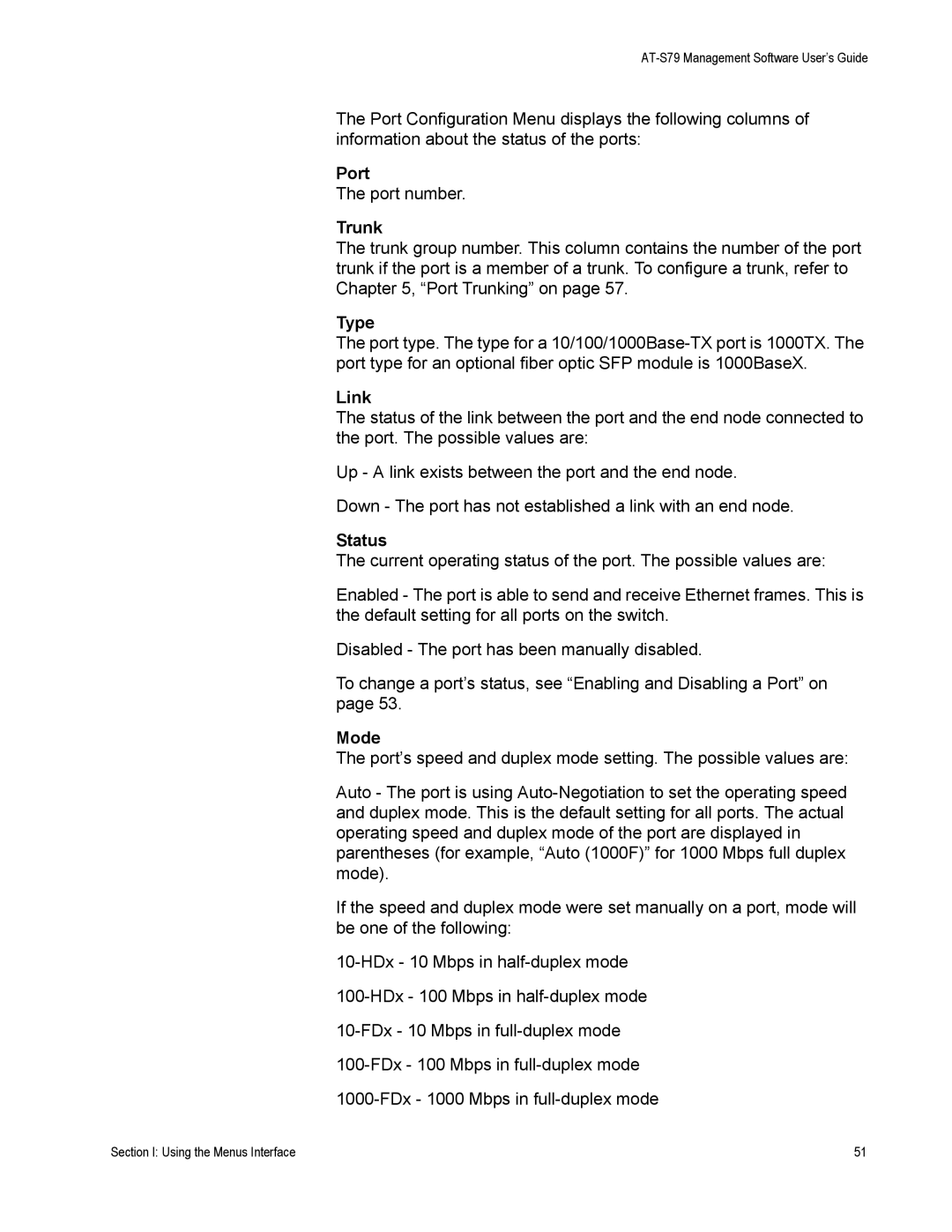The Port Configuration Menu displays the following columns of information about the status of the ports:
Port
The port number.
Trunk
The trunk group number. This column contains the number of the port trunk if the port is a member of a trunk. To configure a trunk, refer to Chapter 5, “Port Trunking” on page 57.
Type
The port type. The type for a
Link
The status of the link between the port and the end node connected to the port. The possible values are:
Up - A link exists between the port and the end node.
Down - The port has not established a link with an end node.
Status
The current operating status of the port. The possible values are:
Enabled - The port is able to send and receive Ethernet frames. This is the default setting for all ports on the switch.
Disabled - The port has been manually disabled.
To change a port’s status, see “Enabling and Disabling a Port” on page 53.
Mode
The port’s speed and duplex mode setting. The possible values are:
Auto - The port is using
If the speed and duplex mode were set manually on a port, mode will be one of the following:
Section I: Using the Menus Interface | 51 |
